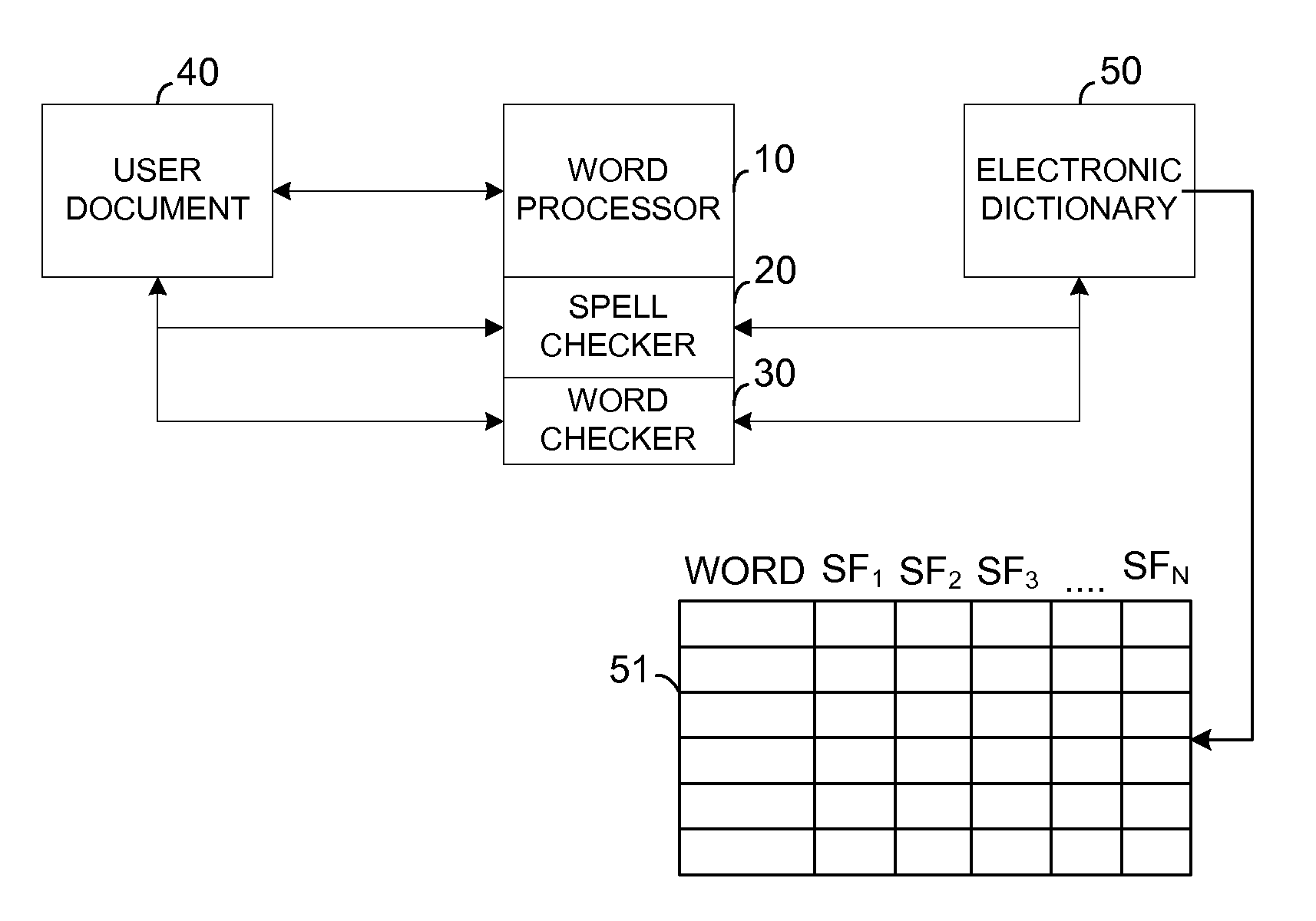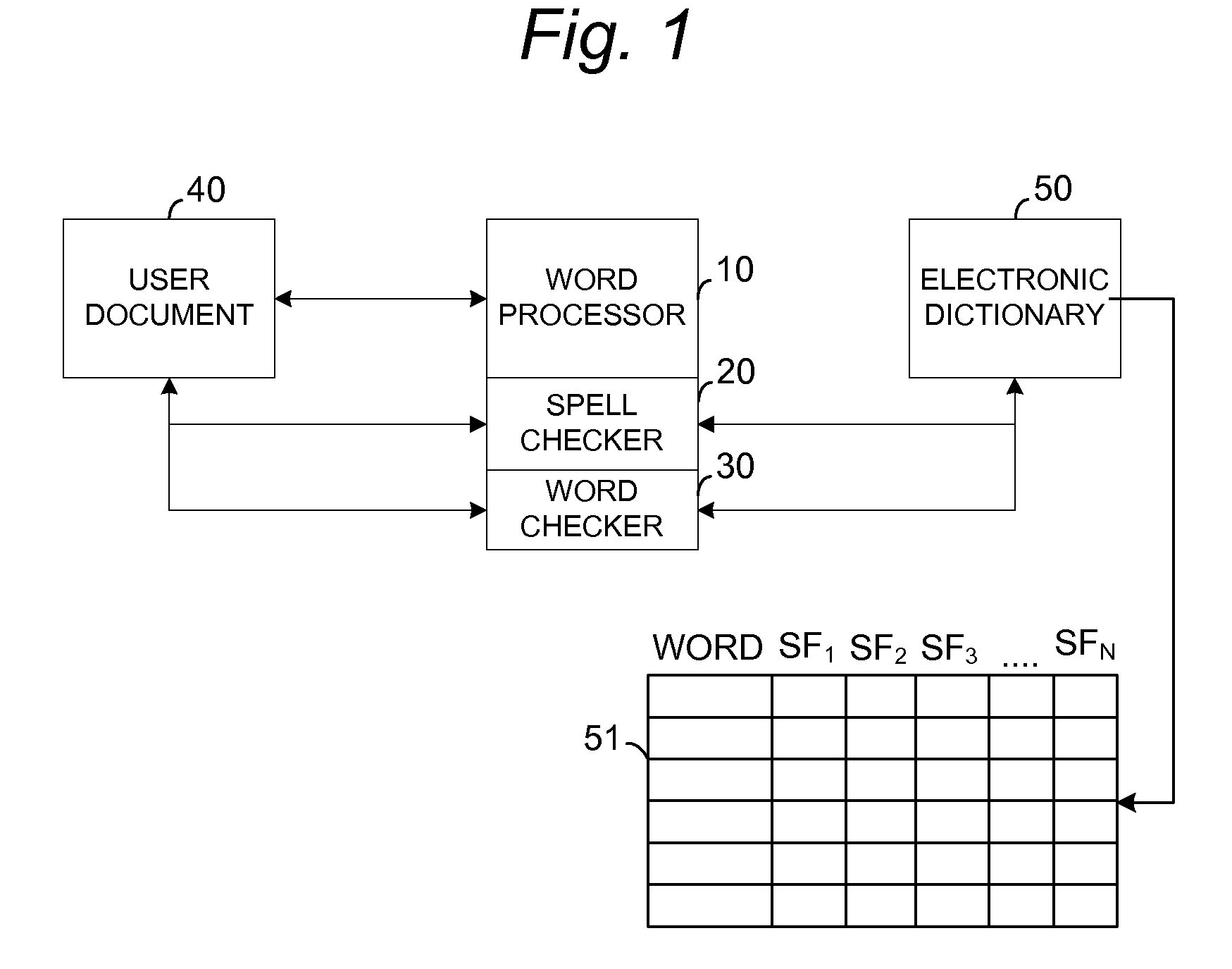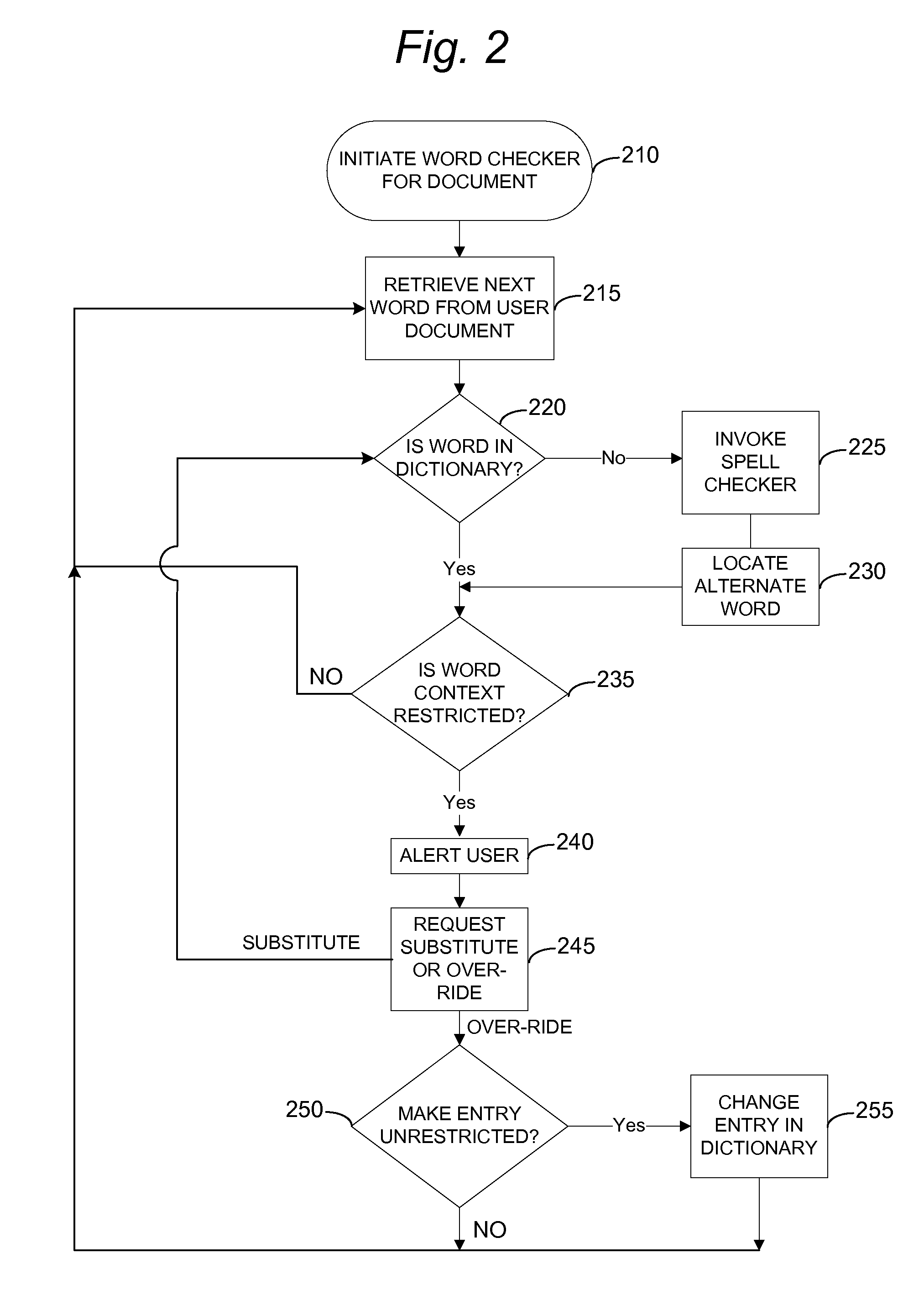Document Distribution Control System and Method Based on Content
a distribution control system and content technology, applied in the field of authoring tools, can solve the problems of inability to determine whether a particular word choice, while accurately spelled, is likely to be an inappropriate word choice, etc., and achieve the effect of improving the integrity and accuracy of such documents and reducing the number of unintentional inappropriate word choices
- Summary
- Abstract
- Description
- Claims
- Application Information
AI Technical Summary
Benefits of technology
Problems solved by technology
Method used
Image
Examples
Embodiment Construction
[0027]FIG. 1 illustrates a physical implementation of a preferred embodiment of a system employing the present invention. A user can interact with a word processing program 10 loaded in a system memory of a conventional computing system, such as a personal computer. Such programs typically include a spell checking routine or module 20, broken out visually in the present figure for clarification. The inventive routine of the present invention is also illustrated as word checker routine or module 30.
[0028]Both spell checking routine 20 and word checker routine 30 have access to and can store / retrieve entries from a standard electronic dictionary 40, which, again, is well-known in the art. In a preferred embodiment, spell checking routine 20 and word checker routine 30 are integrated as a unified module of program 10, but it is understood that they may alternatively be constituted as separate programs that interact with program 10 and each other. Those skilled in the art will appreciat...
PUM
 Login to View More
Login to View More Abstract
Description
Claims
Application Information
 Login to View More
Login to View More - R&D
- Intellectual Property
- Life Sciences
- Materials
- Tech Scout
- Unparalleled Data Quality
- Higher Quality Content
- 60% Fewer Hallucinations
Browse by: Latest US Patents, China's latest patents, Technical Efficacy Thesaurus, Application Domain, Technology Topic, Popular Technical Reports.
© 2025 PatSnap. All rights reserved.Legal|Privacy policy|Modern Slavery Act Transparency Statement|Sitemap|About US| Contact US: help@patsnap.com



